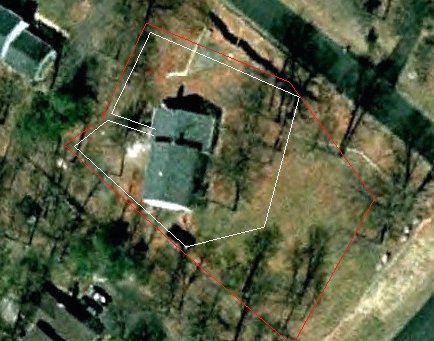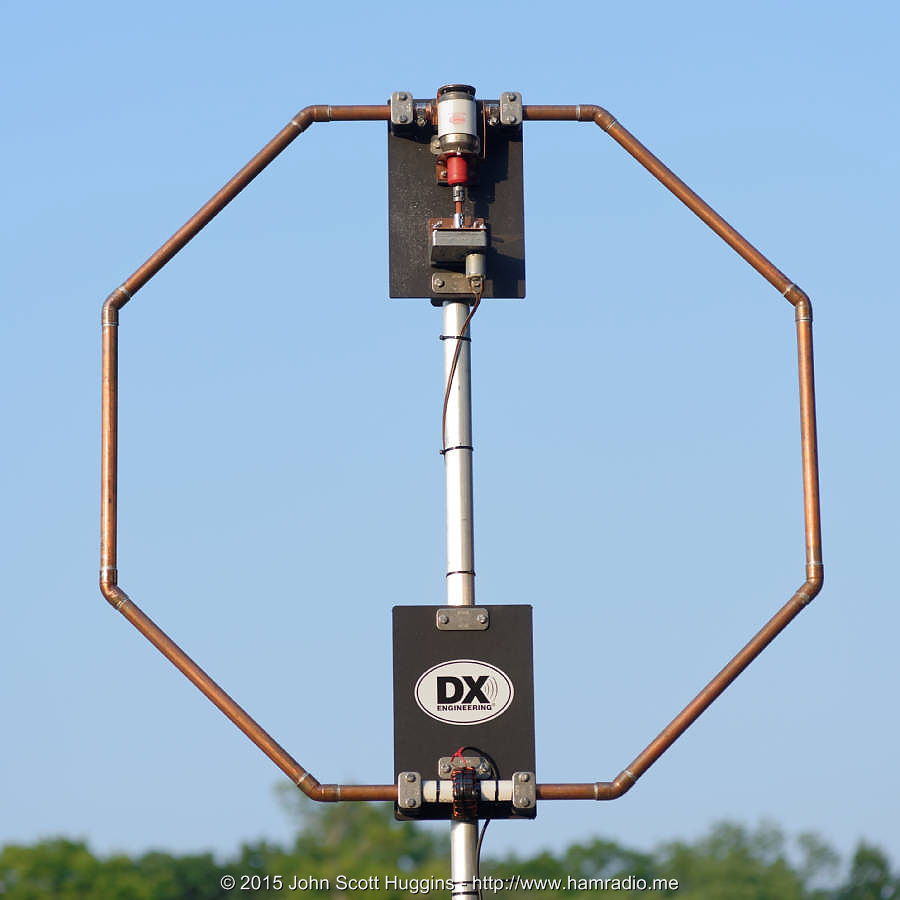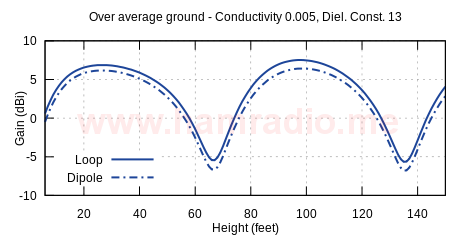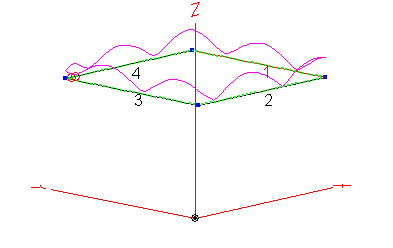A friend is exploring antenna choices at his QTH and needs advice on some new antenna styles to try.
I stopped by for a visit to discover a very large yard with ample room for all kinds of wires antennas.
One issue my friend has it noise on his current antenna.
While his home is an excellent blank canvas waiting for lots of amateur radio antenna possibilities, I thought a full-wave loop might be a real good next-antenna to try.
Which full-wave loop to try first: 40 meter, 80 meter, 160 meter, more?
Google Earth comes to our aid with the excellent program.
Here is a view of my friend’s home…

Using the excellent tools in Google Earth I added two notional loop possiblities: a red line loop as large as the yard, and a 160 meter full wave loop in white. Isn’t this a nice big yard?
For the while loop I included the feed line as part of the total loop length to ensure a reasonable loading appears at the feed point in the house.
Using Google’s measuring tools I confirmed the white loop’s length to be around 525 feet or so including both sides of the transmission line. The red loop is about 680 feet total.
Simulations reveal the usual big lobes at higher frequencies and good behavior at low frequencies.
The big question is do we take full advantage of the yard and make the great big loop, or do we stick with a 160 meter full wave loop and live with that?
Anyone have any thoughts?




I would say just go with the 525 ft version. Longer will have more wire loss and the pattern will get even more complex as you go up in frequency.
If local noise is a problem you have the room to consider a Beverage antenna for receive. If you're not familiar with them start here: http://en.wikipedia.org/wiki/Beverage_antenna .
Or, if you have access to QEX, there was a very interesting article about electronically steering an array of 160m verticals with a set of SDRs in the Nov/Dec 2009 issue.
73, Elwood, WB0OEW
If the feed line is actually “feed line” rather than two VERY widely spaced wires, you can’t really count it as part of the loop…
To Elwood, my 543′ loop is less than 5ohms DCR, wire loss is pretty much a non-issue….
I operate my loop QRP 5W, phone and digital. My loop is only about 35′ high, and I’ve managed to exceed 1000mi/watt on 7 bands, during a solar minimum…
I’d agree with go for the 525′ one, but don’t count the feed line as part of the length. Also, if you’re planning to operate the loop on the harmonics, make it a little longer, remember 14.200/8 is only 1.775…
The parallel wires are not radiating parts of the loop to be sure, but are certainly part of the tuned feeder resonance length complete with standing waves.
Skin effect makes this more of an issue quick as frequency rises.
That's awesome and speaks well of antennas with large effective apertures like this loop. It speaks well of your operating skills too.
The thing to avoid is the presentation of a high impedance to the tuner at the end of the parallel line… no matter how good it is. We select a loop size plus feed-line length that presents the transmatch with something other than a spot on voltage maximum for each band we desire. In the case above, the parallel feed-line length is pretty much set leaving only the loop length to adjust.
I agree the 525' loop is the target circumference, but the feed-line presents this feed-point impedance to the shack at a different impedance.
Of course, if we place an automatic transmatch at the loop's feed-point our worries are less.
How long is your feed-line?
My feed line consists of about 20′ RG-8X to get me up into the attic, into a 4:1 current balun, then about 75′ 450 window line to the loop. It’ll load up fine w/o a tuner on most of 160, about 200kHz of 80, all of 60, most of 40, 20 & 15… Autotuners in the shack have never had a problem tuning it up on any band. I’m going to put an autotuner in the attic this fall, right at the 4:1 balun, so there’s never a high SWR on the 8X, we’ll see how that works out.
73, N4RP
What is the best height? most tell me that 50 foot but I wonder what happens with height say 80 ' for example. I have worked guys on 20 meters using loops at 100' and low power and they are 40 plus over. So if a person has room for a loop such as myself, over a 1000 feet by 500 feet, would height make the loop antenna work better that at 50 foot up.
The higher off tge ground the antenna, the better it will perform at the lower frequencies. If you want it to be a NVIS, keep it lower. If you want to use it for dx, get it as close to 1/2 wavelength off the ground as possible.